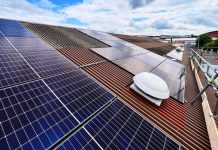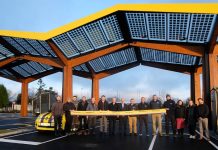The government today signalled its ambitions to increase nuclear capacity fourfold to 24GW by 2050, a leap billed as Britain’s biggest in 70 years.
Construction every five years of at least one new station equivalent to the 3.2GW Hinkley C or Sizewell C stations now being prepared by operator EdF, is contemplated. Advancing new technology too in small modular reactors (SMRs) and advanced fuels, delivered under the banner of holding entity Great British Nuclear, is also confirmed.
Today’s outline presents the government’s hopes of nuclear taking up to 25% of power by mid-century, against around 15% today.
Plans presented today as the UK’s Civil Nuclear Roadmap put more detail on aspirations flagged two years ago under the Johnson administration. The blueprint is designed to give investors long-term certainty, building on the government’s confirmation delivered two years ago that Sizewell C should go ahead.
In keeping with Rishi Sunak’s proclaimed focus on long-term decisions for British infrastructure, today’s statement quantifies an ambition to secure sufficient investment every five years from 2030 to 2044 to add between 3 and 7GW worth of new nuclear projects.
The former nuclear site in Wylfa, Anglesey as well as Moorside, Cumbria are believed to be forerunners for major projects.
Boosting development of advanced nuclear fuels, including a derivative known as HALEU (high assay, low emission uranium), is central to Whitehall’s plans. Only this week the government pledged up to £300 million to prime UK production of the fuel, currently produced commercially only in Russia.
Seeking output early next decade from a planned hub in the North West, ministers want the UK to lead the way in HALEU. It will complement uranium conversion at the Springfields nuclear fuel site in Preston.
An additional £10 million will be provided to develop the skills and sites needed to produce other advanced nuclear fuels in the UK, helping to secure long term domestic nuclear fuel supply.
“Nuclear is the perfect antidote to the energy challenges facing Britain”, said Sunak. “It’s green, cheaper in the long term and will ensure the UK’s energy security.
“This is the right long-term decision and is the next step in our commitment to nuclear power, which puts us on course to achieve net zero by 2050 in a measured and sustainable way”.
Green power advocates remain sceptical. From the REA, policy director Frank Gordon said ministers had been “exploring” new private-led nuclear plants for years.
He added: “We need to accelerate the deployment of all clean energy sources, especially renewable power from diverse sources, plus supporting the roll-out of the much-needed clean technologies, energy storage working at all scales and duration.”
Delays and cost over-runs continue to dog current nuclear expansion. EdF’s latest estimate for Hinkley C – pictured – is £33 billion, up 50% on its projected cost seven years ago. First output announced for summer 2027 is also believed to be in doubt.



